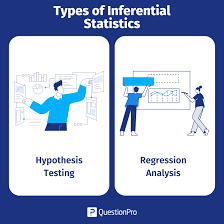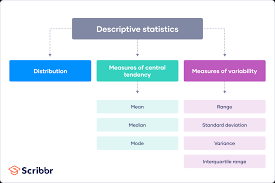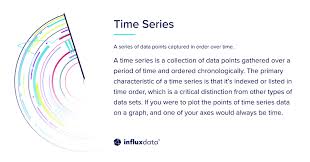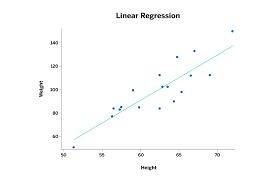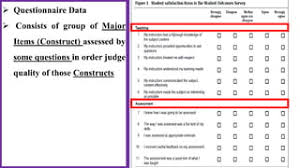The Power of Inferential Data Analysis
Inferential data analysis is a crucial component of statistics that allows researchers and analysts to draw conclusions beyond the immediate data they have collected. By using inferential analysis, one can make predictions, generalisations, and inferences about a larger population based on a sample of data.
Unlike descriptive data analysis that focuses on summarising and presenting the characteristics of the data itself, inferential analysis helps us understand the relationships between variables, test hypotheses, and make informed decisions based on statistical evidence.
Key Techniques in Inferential Data Analysis
Some common techniques used in inferential data analysis include:
- Hypothesis Testing: This technique involves formulating a hypothesis about a population parameter and using sample data to determine whether there is enough evidence to support or reject the hypothesis.
- Confidence Intervals: Confidence intervals provide a range within which we can be reasonably confident that the true population parameter lies. They help quantify the uncertainty associated with our estimates.
- Regression Analysis: Regression analysis allows us to explore relationships between variables and make predictions based on these relationships. It helps identify significant factors that influence an outcome.
- ANOVA (Analysis of Variance): ANOVA is used to compare means across multiple groups and determine whether there are statistically significant differences between them.
The Importance of Inferential Data Analysis
Inferential data analysis plays a vital role in various fields, including scientific research, business decision-making, healthcare, social sciences, and more. By leveraging inferential techniques, organisations can make informed choices, identify trends and patterns, validate assumptions, and drive evidence-based decision-making.
Moreover, inferential analysis helps researchers extrapolate findings from a sample to a larger population with confidence. It enables us to go beyond merely describing what we observe in our data and move towards making meaningful interpretations that have practical implications.
Conclusion
Inferential data analysis empowers us to extract valuable insights from limited datasets and make informed decisions based on statistical evidence. By employing sound inferential techniques, we can unlock the hidden potential within our data and uncover meaningful patterns that drive progress and innovation in various domains.
Understanding Inferential Data Analysis: Key Questions and Concepts Explained
- What are the 3 types of inferential statistics?
- What is inferential vs predictive analysis?
- What is inferential vs descriptive analysis?
- What is inferential analysis with example?
- What are the types of data analysis inferential?
- What is inference in data analysis?
What are the 3 types of inferential statistics?
In the realm of inferential statistics, there are three primary types of techniques commonly employed to draw conclusions and make inferences about a larger population based on sample data. These include hypothesis testing, confidence intervals, and regression analysis. Hypothesis testing allows researchers to assess the validity of a claim about a population parameter using sample data. Confidence intervals provide a range within which the true population parameter is likely to fall, offering a measure of uncertainty around estimates. Regression analysis, on the other hand, explores relationships between variables and enables predictions based on these relationships, helping to identify key factors influencing outcomes. Each of these inferential statistical techniques plays a crucial role in extrapolating insights from data samples to broader populations with confidence and accuracy.
What is inferential vs predictive analysis?
In the realm of data analysis, a common query often arises regarding the distinction between inferential and predictive analysis. Inferential analysis involves drawing conclusions and making inferences about a larger population based on a sample of data. It focuses on understanding relationships between variables, testing hypotheses, and generalising findings beyond the immediate dataset. On the other hand, predictive analysis aims to forecast future outcomes based on historical data patterns. It involves building models that can predict future trends, behaviours, or events by identifying patterns and relationships within the data. While inferential analysis seeks to understand broader implications and draw insights about populations, predictive analysis is geared towards anticipating future scenarios and making proactive decisions based on data-driven forecasts.
What is inferential vs descriptive analysis?
Inferential data analysis and descriptive data analysis are two fundamental approaches in statistics that serve distinct purposes. Descriptive analysis focuses on summarising and presenting the characteristics of a dataset, such as central tendency, variability, and distribution of values. It provides valuable insights into the data itself but does not extend beyond the observed sample. On the other hand, inferential analysis goes a step further by drawing conclusions that apply to a larger population based on a sample of data. Inferential analysis involves making predictions, testing hypotheses, and generalising findings beyond the immediate dataset. While descriptive analysis helps us understand what is happening in our data, inferential analysis allows us to make informed decisions and draw meaningful insights that have broader implications.
What is inferential analysis with example?
Inferential analysis involves drawing conclusions and making predictions about a larger population based on a sample of data collected. For example, suppose a researcher wants to determine the average age of all students in a university but cannot survey every student. By collecting a representative sample of students and analysing their ages, the researcher can use inferential analysis to estimate the average age of the entire student population with a certain level of confidence. This extrapolation from the sample data to make broader inferences about the population is at the core of inferential analysis, allowing researchers to make informed decisions and generalisations based on statistical evidence.
What are the types of data analysis inferential?
When exploring the types of inferential data analysis, it is essential to understand the various techniques used to draw conclusions about a larger population based on sample data. Some common types of inferential data analysis include hypothesis testing, confidence intervals, regression analysis, and ANOVA (Analysis of Variance). These techniques enable researchers and analysts to make predictions, test hypotheses, identify relationships between variables, compare means across groups, and ultimately make informed decisions backed by statistical evidence. Each type of inferential data analysis serves a specific purpose in extrapolating insights from sample data to make meaningful inferences about the broader population.
What is inference in data analysis?
In the realm of data analysis, inference refers to the process of drawing conclusions or making predictions about a larger population based on a sample of data. It involves using statistical techniques to analyse the relationships between variables, test hypotheses, and extrapolate findings beyond the immediate dataset. Inference is essential for researchers and analysts to make informed decisions, identify patterns and trends, and gain deeper insights into the underlying characteristics of a population. By understanding the principles of inference in data analysis, professionals can leverage statistical evidence to drive evidence-based decision-making and uncover valuable information that shapes our understanding of complex datasets.


